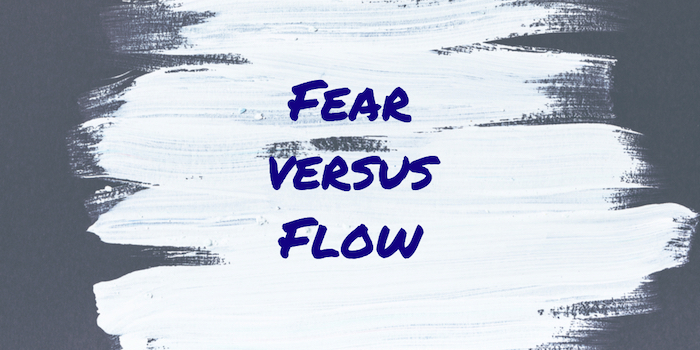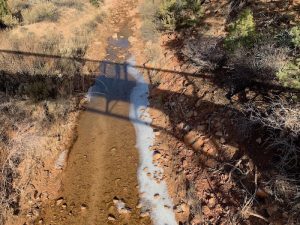Listen to this post
 Being stuck at home might seem like a golden opportunity to do more writing. But quarantine isn’t turning out to be a great writing retreat for most people.
Being stuck at home might seem like a golden opportunity to do more writing. But quarantine isn’t turning out to be a great writing retreat for most people.
How can you write when you’re focused on the news and consumed with anxiety?
Fear can be paralyzing. The thing that we fear occupies all of our attention, displacing creative mind-wandering and open attention. Going online doesn’t help, as nearly every headline and social media post reminds us of the pandemic.
Fear keeps us from writing. Or, so it seems.
Maybe we should flip our thinking.
Instead of I’m too anxious to write, consider this: I’m too busy writing to be anxious.
I challenge you to do the seemingly impossible: find a state of flow in your writing, if only for a few minutes. Yes, even now. Especially now.
Finding writing flow in times of anxiety
Sometimes you get lost in the work of writing, losing track of time altogether. When that happens, you’ve been enjoying what psychologists call flow. It’s an ideal writing state, and we only tend to realize we’ve been in it when it’s over.

Psychologist Mihaly Csikszentmihalyi has studied the subject extensively. In his book Flow: The Psychology of Optimal Experience, he describes nine common characteristics of a state of flow:
- Challenging work, but within your ability
- Clear goals
- Clear feedback through the work
- Absorption in the task at hand
- Lack of distractions
- Lack of self-consciousness
- Absence of fear
- Losing track of time
- Fulfillment and enjoyment
Pay attention to #5 and #7—the lack of distraction and the absence of fear.
By definition, you can’t experience flow while you’re fearful.
But let’s flip that thinking: You cannot be fearful when working in a state of flow.
If you could somehow dive into your writing, you would shut off the fear and enjoy a mini-vacation from the current crisis. How do you do that?
Fake it ’til you make it
I’m a big fan of letting our actions guide our beliefs.
If you can’t seem to get started, try behaving as if you’re engaged in your writing. Create the opportunity for flow, and it might happen. Even if it doesn’t, you’ll have made an attempt to control your attention.
Here’s what I suggest:
- Set a timer for half an hour.
- Clear a special place to work on your writing. Commandeer the kitchen table, or shut yourself in the bedroom and tell the people around you not to bother you for half an hour.
- Spread out your papers and get your favorite pen or writing implement.
- Start writing and keep going until your timer rings. No checking the news or social media—it’s just you and your work.
Pick any writing project you feel the slightest attraction to, no matter how frivolous. Don’t worry about what you should be writing. Choose the one you want to work on today. Duty can wait.
Don’t have a project? Start a journal on writing in quarantine. You might enjoy reading it later.
Give the work the chance to catch your full attention.
If you behave as if you are writing in a state of flow, you might achieve it for a short while. And when you’re absorbed in your work, it demonstrates to your brain that you can take a break from the current reality.
I’m not a therapist and make no promises. But I’ve noticed this myself: diving into the writing creates a welcome distraction from the worries of the moment.
What if by writing ourselves into a state of flow, we can take a break from our worries?
It seems worth trying.
Other things that might help:
Read my post on Finding Flow in the Writing Process.
Watch the replay of my Inner Game of Writing webinar.
Find Mihaly Csikszentmihalyi’s book Flow on Amazon, or support indie bookstores and order through Bookshop.